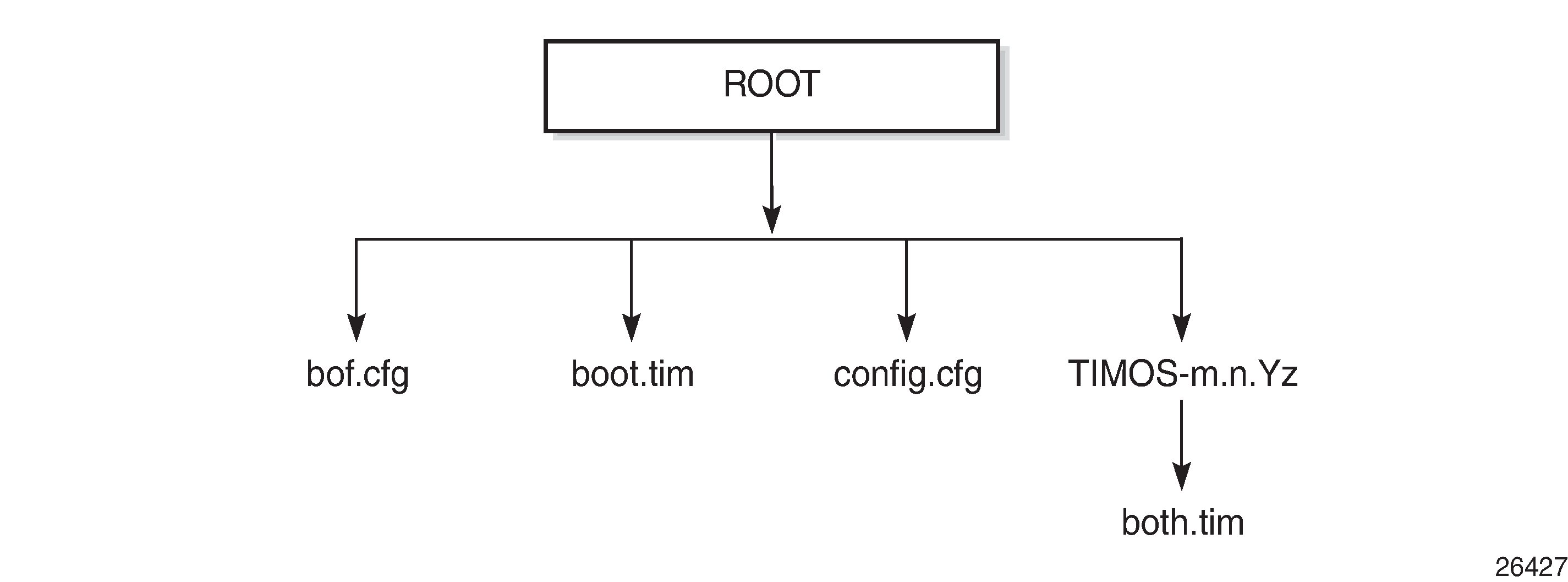When the 7210 SAS device is powered on, the system executes the boot.tim file (also known as the boot loader or the bootstrap image) from the file system located on a flash device (cf1:\) or the USB (on the 7210 SAS-K 2F1C2T, 7210 SAS-K 2F6C4T, and 7210 SAS-K 3SFP+ 8C) available on the 7210 SAS platform. The boot.tim file is the image that reads and executes the system initialization commands configured in the Boot Option File (BOF).
Some 7210 SAS platforms (including the 7210 SAS-K 2F1C2T, 7210 SAS-K 2F6C4T, and 7210 SAS-K 3SFP+ 8C) do not ship with an image. It is expected that the user will use the external flash or the USB device with boot-loader image (boot.tim) to boot the system. Insert the device containing the bootstrap image in the specified storage media location before powering on the system, as follows:
external flash
Insert the compact flash into the external compact flash slot.
SD card
Insert the SD card into the SD card slot.
USB device
Insert the USB storage device into the USB port.
See the appropriate 7210 SAS chassis installation guide for more information about the prerequisites for specific 7210 SAS platforms.
If the boot.tim file is absent or invalid, and cannot be loaded, the platform-specific handling is as follows:
7210 SAS-D
On this platform, the boot ROM loads the golden bootstrap image. The golden bootstrap image is equivalent to a boot.tim file, but it is present outside the file system, and can be updated and checked using special CLI commands.
7210 SAS-K 2F1C2T, 7210 SAS-K 2F6C4T, 7210 SAS-K 3SFP+ 8C
On these platforms, if the system cannot find the bootstrap image in the default location (cf:\boot.tim), the system searches other storage locations (such as uf1:\) for the file and uses the boot.tim file in these locations to boot the system.
7210 SAS-Dxp
The 7210 SAS-Dxp supports the use of a single replaceable storage medium in the SD card slot. The user must ensure that the image files are available on the medium and can be read by the system. If the system fails to boot, the medium can be replaced with another working medium containing the correct images.
The following figure shows the typical flash directory structure and filenames when the node is shipped from the factory.

Files on the compact flash are the following:
bof.cfg - boot option file
boot.tim - bootstrap image
config.cfg - default configuration file
TIMOS-m.n.Yz:
m - major release number
n - minor release number
Y - type of release
- A - alpha release
-
B - beta release
-
M - maintenance release
-
R - released software
z - version number
both.tim - CPM and IOM image file